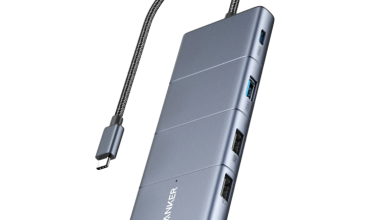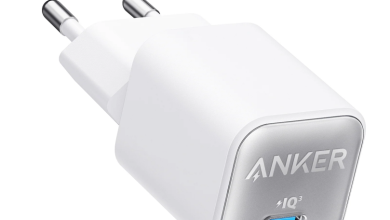Monitoring Technology: Keeping a Watchful Eye on the Digital World

https://hybridpedia.com/technology/how-to-get-synthetics-monitoring-to-work-in-new-relic/ In an age defined by digital transformation, monitoring technology has become an essential part of our daily lives. It’s the invisible force that ensures the smooth operation of countless systems, from websites and applications to critical infrastructure and even our personal health. In this comprehensive article, we’ll explore the world of monitoring technology, how it works, its various applications, and the pivotal role it plays in our interconnected world. Essence of Monitoring Technology
I. The Essence of Monitoring Technology
Monitoring technology encompasses a wide range of tools and methods designed to observe and track the behavior, performance, and status of various systems and processes. Its primary objective is to provide real-time or near-real-time data, enabling informed decision-making, issue resolution, and optimization.
A. Key Components of Monitoring Technology
- Data Collection: Monitoring technology collects data from various sources, which can include sensors, software agents, logs, and external systems.
- Data Processing: Once data is collected, it undergoes processing to extract meaningful information and identify anomalies or patterns.
- Alerting and Reporting: Monitoring solutions generate alerts or reports to inform stakeholders of noteworthy events, performance deviations, or potential issues. Essence of Monitoring Technology
- Visualization: To facilitate understanding, data is often presented through visual dashboards, graphs, and charts.
B. The Role of Monitoring in Digital Transformation
In the context of digital transformation, monitoring technology is a crucial element for organizations. It provides insights into the performance and availability of digital assets, helping to ensure a seamless user experience and quick issue resolution.
II. The Wide Spectrum of Monitoring Applications
Monitoring technology finds application in a multitude of domains, reflecting its adaptability and significance in modern society.
A. IT Operations and Infrastructure Monitoring
- Network Monitoring: Observing network traffic, bandwidth utilization, and device health to ensure efficient data transfer.
- Server Monitoring: Tracking the health and performance of servers, including resource utilization, uptime, and response times.
- Application Performance Monitoring (APM): Focusing on the performance of software applications, including response times, error rates, and user satisfaction.
B. Website and User Experience Monitoring
- Website Monitoring: Assessing the availability, load times, and overall functionality of websites to ensure they meet user expectations.
- User Experience Monitoring: Evaluating the complete user experience, including factors like page load times, navigation, and transaction flows.
C. Cloud and Container Monitoring
With the rise of cloud computing and containerization, monitoring technology has evolved to address the specific challenges of these environments. It ensures the reliability and performance of applications hosted in the cloud and within containerized environments.
D. Security and Threat Detection
Security monitoring technology is essential for identifying and responding to security threats. It analyzes data to detect unauthorized access, breaches, and suspicious activities.
E. Industrial and Infrastructure Monitoring
In the industrial sector, monitoring technology is used for the real-time tracking of machinery and equipment. It ensures safety, efficiency, and the prevention of equipment failures.
F. Healthcare and Remote Patient Monitoring
With the advent of telehealth, monitoring technology has expanded into healthcare. It allows for remote monitoring of patients’ vital signs and conditions, reducing the need for in-person visits.
III. The Mechanics of Monitoring Technology
To effectively monitor a system or process, monitoring technology relies on a combination of data sources, sensors, algorithms, and reporting mechanisms. Here’s an overview of the monitoring process:
A. Data Collection
- Passive Monitoring: In passive monitoring, data is collected from existing sources, such as logs or network traffic.
- Active Monitoring: Active monitoring involves actively probing systems or applications to gather data. For example, synthetic monitoring simulates user interactions to assess application performance.
B. Data Analysis
- Data Processing: Collected data is processed to extract relevant information, identify patterns, and detect anomalies. This can involve data normalization, aggregation, and statistical analysis.
- Alerting: When predefined thresholds or conditions are met, the monitoring system generates alerts. Alerts notify stakeholders of issues or potential problems that require attention.
C. Visualization and Reporting
Data is visualized through dashboards, graphs, and charts, providing a user-friendly interface for stakeholders to assess the system’s status.
D. Data Storage
Monitoring technology often includes data storage capabilities to store historical data, which is valuable for trend analysis and forensic investigations.
IV. The Role of Artificial Intelligence and Machine Learning
Artificial intelligence (AI) and machine learning (ML) have begun to play a significant role in monitoring technology. These technologies enhance the ability to detect anomalies, predict issues, and provide insights based on historical data.
A. Anomaly Detection
AI and ML algorithms can identify deviations from normal behavior in real-time, which is crucial for detecting potential issues or security threats.
B. Predictive Analytics
By analyzing historical data, monitoring technology powered by AI and ML can make predictions about future performance and identify potential bottlenecks or resource constraints.
C. Automation
AI and ML can automate the resolution of routine issues, reducing the workload on IT and operations teams.
V. The Future of Monitoring Technology
As technology continues to advance, the future of monitoring technology holds several exciting developments:
A. Increased Automation
Automation will play a more prominent role in monitoring, allowing for faster issue resolution and reducing manual intervention.
B. Integration with IoT
The Internet of Things (IoT) will create new monitoring challenges and opportunities, as an increasing number of devices and sensors will require monitoring.
C. Improved User Experience Monitoring
User experience monitoring will become even more sophisticated, offering real-time feedback on application and website performance, helping organizations deliver exceptional user experiences.
D. Enhanced Security Monitoring
As cyber threats become more sophisticated, security monitoring will evolve to detect and mitigate complex threats.
VI. Conclusion
Monitoring technology is the silent guardian of the digital world, ensuring that systems and processes function seamlessly. From IT operations and security to user experience and healthcare, it has diverse applications that impact various aspects of our lives. As technology continues to advance, monitoring technology will evolve to meet the challenges and opportunities of our ever-connected world.



